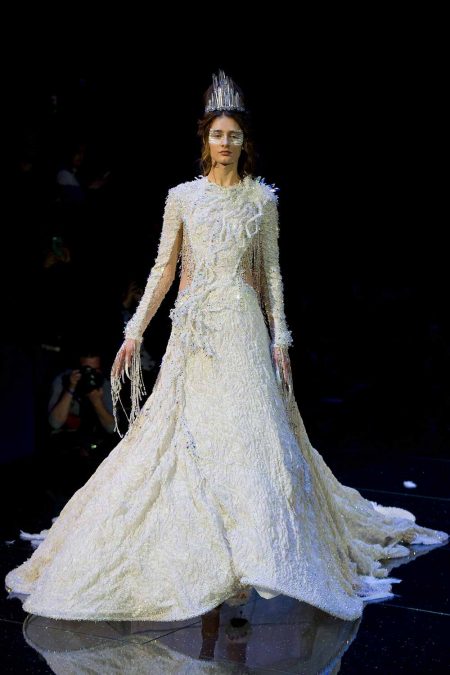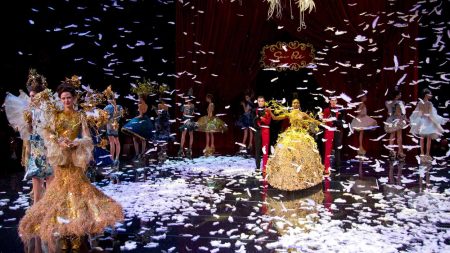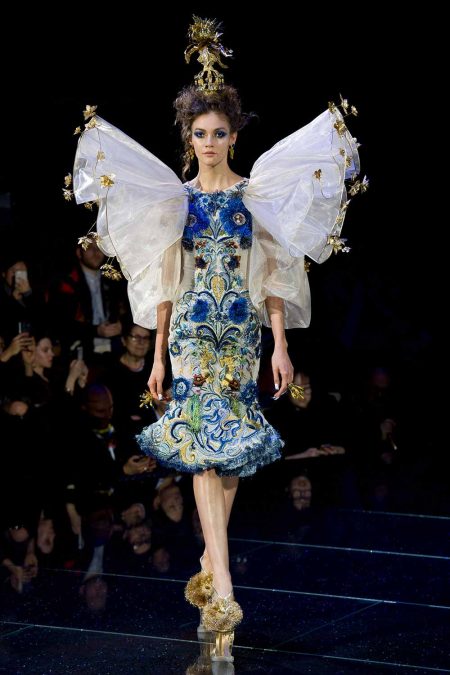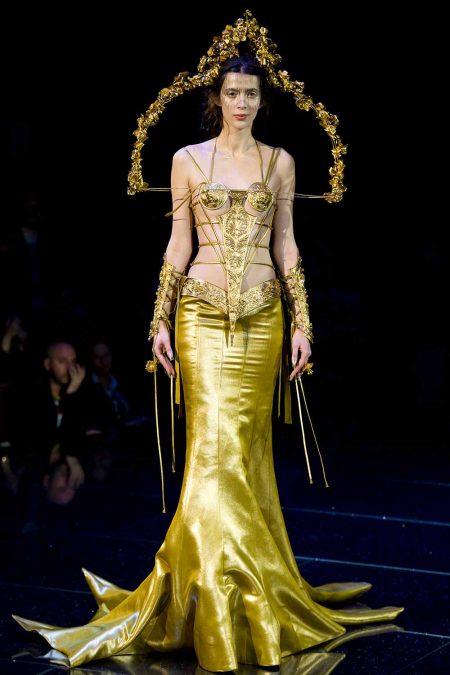“Every flower is a soul blossoming in nature.” – Guo Pei
Elysium, originally a word not commonly used in our modern vernacular, has become a part of the zeitgeist of fashion and pop culture.
What is Elysium? It’s a yearly artistic installation that captures the attention of Hollywood celebrities and fashion elite in Los Angeles (a.k.a. The Art of Elysium Gala). It’s a Matt Damon-helmed film that explores the notion of the haves and have-nots set against the backdrop of an alternative universe set in the future. It’s a paradise.
It’s actually most beautifully described by Merriam-Webster (yes, the dictionary) as “the abode of the blessed after death in classical mythology”. Elysium is a select view of the afterlife from Greek Mythology also known as Elysian Fields.
This much-written amount place was the inspiration for designer Guo Pei’s Spring 2018 Couture collection, shown on January 24th at the Cirque d’Hiver Bouglione during Paris Couture Week. Pei, a new designer to this column, has garnered great admiration for her design work during past couture weeks and is only the second Asian designer to be given a place as a guest member of the Chambre Syndicale de la Haute Couture (second to Elie Saab).
Born and educated in Beijing, the Chinese designer headquarters her atelier in Paris and is known for creating intricate pieces of art that balance a sense of tradition with the creative freedom that comes with couture fashion. The clothing she designs is not for every day; they are living, breathing monuments of art.
For Spring 2018, Pei dove deeply into her Elysium to bring us “an island of joy and life miracles where white winding tree roots float in the sky.” The stage setting, accentuated with a noir stage to convey the look of the ocean’s surface, was as much a part of the show as the pieces themselves.
Like the hanging gardens that shone above the models, each piece had the level of detail that Pei is known for. Paired with the opulent head-to-toe embroidery were intricately designed origami sleeves and skirt hems with exquisite fan effect and an interesting infusion of metalwork which gave this flight of fantasy an air of strength.
The shapes of each individual piece varied, but all tended toward the fantastical. The beginning look, noted by the designer as “Queen of the Garden”, looked like an extraordinarily elaborate ball gown from the front. When the model turned the corner though, the piece transformed into an oblong egg shape that would have easily been well at home at the court of Marie Antoinette. It set a tone for the show to expect the unexpected and to embrace the exploration of this Elysium for as long as the show lasted.
Other shapes went from exaggerated bell skirts to asymmetrical pencil silhouettes to mermaid styles. Each look, defined in its own right, hovered over the body similarly to the skeletal like designs of masters Alexander McQueen, Iris van Herpen and even Charles James. Besides showcasing how extreme these garments were in terms of everyday wear, they also gave the impression that the collection was about the artistic moment, not the women wearing them. A stark difference than if Pei was showing a ready to wear collection.
As the models gracefully walked the runway in an almost-hypnotic circular motion, viewers were given the opportunity to see these pieces of art come to life. The models walked slowly, methodically, to steady tones with inflections of flutes and drums. When the final gown stepped onto the runway, the music changed and so did the feeling of the collection. The music, now being sung with lyrics, was joyfully reminiscent of a show tune from a musical, that time in every play when the lead finds his or her joy and chooses to rise up.

It was at this point the music turned to a strong drum beat and the models returned to the runway to finish in cylindrical finale walk with feathers dropping from the sky. It was a showstopper, exactly what a couture show should be.
The color palette for the collection ranged from blue to deep golds, ending with shades of white. Each piece moved the collection forward in terms of the palette. According to Pei, the colors showed “the sun that disperses the morning mist, the shooting star that pierces the night sky. The warm color of gold symbolizes the endless source of joy in Elysium. While white, color of the soul, implies ultimate purity and beauty throughout the collection.” Her inspiration and interpretation was spot on.
Now more than ever, an idea of an Elysium, a utopia, feels less like a lesson in fantasy and more like a hopeful wish. Wouldn’t we all just like to step out of our lives and go somewhere free from all of the anguish?
Pei often explores two subjects in her work: life and responsibility. It’s interesting that, at this time, she chose life. She chose to explore the joy, not delve into the dark. Perhaps there’s a lesson we can all take from that.
–Jennifer Perusek











